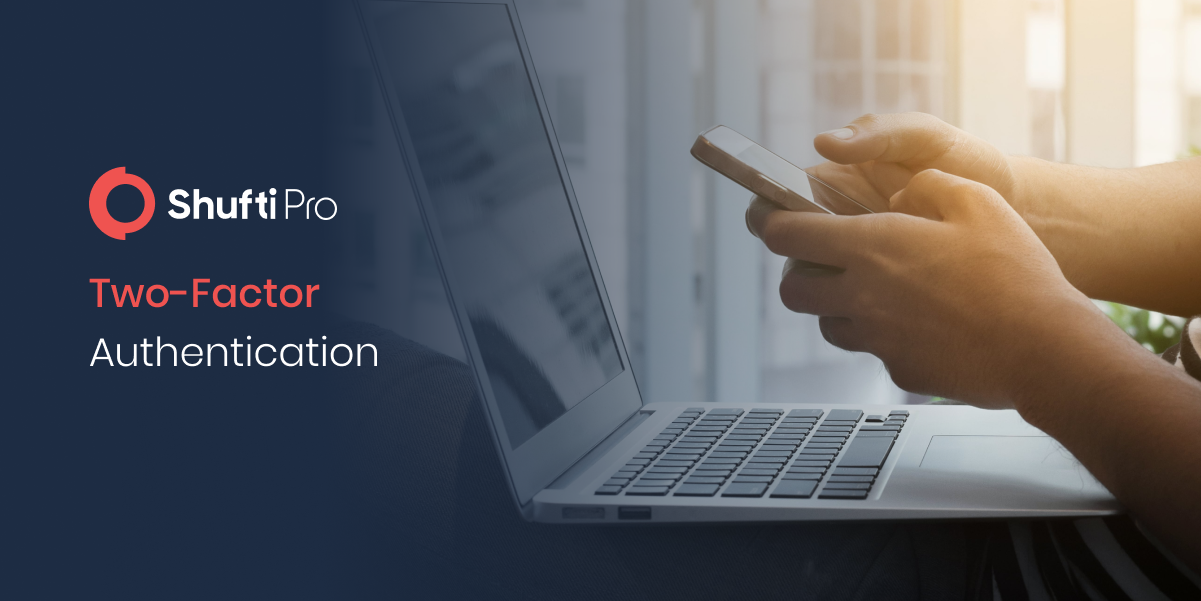How Two-Factor Authentication Enhances the Security of Digital Business Platforms

Considering the recent trends in fraudulent activities, it is evident that social engineering and cyberattacks have become a serious issue in various industries. Banks and financial institutions throughout the world face concerns due to illicit financial flows that originate from the manipulation of personal information. As fraudsters are coming up with new and more sophisticated methods to access sensitive data, institutions are becoming more vulnerable to cybercrime.
The Covid-19 pandemic drastically changed cyberspace as most businesses completely started relying on digital platforms. Although firms expected a scenario where cybercrime would be eliminated, bad actors started creating new ways to bypass security controls.
Effect of Cybercrime on Business Operations
In a world where social engineering attacks are common despite financial regulations, it is clear that security measures employed by digital business platforms are inadequate. The technical vulnerability demonstrated by firms that look to save money by avoiding Know Your Customer verification measures ultimately leads them to big problems. Companies end up paying twice as much in KYC compliance penalties and also suffer from a stained reputation.
Cyberattacks in the form of social engineering and phishing attacks like Business Email Compromise were 80% effective in data breaches and caused significant financial losses to businesses. According to Cisco’s 2021 Cybersecurity Threat Trends Report, phishing attacks accounted for up to 90% of the data breaches last year. Businesses reported that phishing attacks are so successful because they capitalize on the weakest link in online business platforms – the employees.
In March 2022, a US government news update was issued, which described how state-sponsored cybercriminals successfully manipulated certain authentication workflows in combination with PrintNightmare vulnerability (CVE-2021-34527) to achieve access to administrative controls to the Windows domains. The resulting losses revealed a lack of security measures, in particular, two-factor authentication.
Why Passwords Fail as a Security Measure
Passwords are not something that can be relied upon when it comes to online safety and protection of sensitive business data. This is simply because passwords are not hacker-proof and no matter how strong a password is chosen to protect business accounts, it is no use without two-factor authentication. According to statistics, “On average, organizations experience 12.2 incidents each month in which an unauthorized third-party exploits stolen account credentials to gain access to corporate data stored in a cloud service. These incidents affect 80.3% of organizations at least once a month. Additionally, 92% of companies have cloud credentials for sale on the Dark Web.”
Social Engineering and Phishing Attacks
Business addresses and personally identifiable information of legitimate business personnel are used in social engineering attacks to make the emails appear important. Since slight alterations in characters are often ignored in business communication via email, these phishing attacks are usually successful in getting access to sensitive data. These advanced criminal tactics result in decreased productivity for businesses, as well as financial losses through fraudulent transactions.
In phishing attacks, cybercriminals create seemingly legitimate links and embed them within emails, forcing business executives to click. These links are the real issue that targets the weakness of company employees. Upon clicking, victims are redirected to a different website that seems legitimate but it’s a trap. The new website will ask for sensitive information like your personal information, social media credentials, or bank account information. If any of your employees provide such information, your customers’ information can be accessed and used for illegal gains.
Apart from dealing with these problems, businesses have to invest additional amounts for recovery from damages. Although businesses usually recover from the monetary losses due to social engineering attacks and even pay the recovery costs, the permanent stain on their reputation adversely affects businesses for years to come.
Businesses struggle to re-establish the stained reputation of their customers and partners once a cyberattack affects their business. That being said, onboarding new customers also becomes significantly difficult for businesses that become part of the headlines for having become the victims of data breaches.
For these reasons, digital platforms now strive to improve their security measures by employing two-factor authentication instead of focusing solely on saving costs. Minutes of meetings, transaction details, business collaborations, and internal communications are sensitive records that fraudsters look to access through social engineering attacks. That’s not all, companies invest in recovering from data losses, there are not only additional financial implications but also significant productivity gaps.
How Two-Factor Authentication Solves the Problem
With the losses due to financial crime soaring up to $60 million in 2020, staying one step ahead of cybercriminals has become essential for businesses. Two-factor authentication is a solution to secure business communications through emails and other platforms in order to protect confidential information from data breaches. 2FA enables businesses to eliminate fraud and overcome social engineering attacks by incorporating an additional requirement of a one-time code. These authentication solutions enable businesses to detect fraudulent activity beforehand and protect their financial assets as well as their reputation from being damaged.
This auto-generated random code, usually comprising four characters, is sent via registered email or SMS, allowing only the legitimate personnel to log in. Security departments in organizations must be encouraged to enable 2FA for all internal and external business communication, including emails and the particular applications being used within the workplace. In the cases where credentials are obtained by cybercriminals through phishing, smishing, or whaling, the additional code requirement stops them in their tracks.
What Shufti Offers
To sum it up, the surging threats of social engineering attacks targeting technological and structural weak links in digital business platforms call for improvements in security measures. Cybercriminals getting access to intelligent techniques for automation and hacking have resulted in the loss of sensitive data, causing businesses to shut down. Shufti’s two-factor authentication provides protection for business accounts and keeps company information from falling into the wrong hands.
Learn more about the applications of two-factor authentication in business!











